PAOC Spotlights
Exoplanets and the Search for Habitable Worlds
For thousands of years people have wondered, “Are there planets like Earth?” “Are they common?” “Do any have signs of life?”
Today astronomers are poised to answer these ancient questions. We have found thousands of planets that orbit nearby Sun-like stars, called “exoplanets.” We have evidence that almost every star has a planetary system. Best of all, we know that Earth-size planets are common.  The ambitious work ahead is to discover Earth-like planets. That is, planets with water oceans and continents and a thin atmosphere that warms the surface to the right temperature for life. Venus and Earth – about the same size and mass – would appear indistinguishable to any of our current planet-finding methods. Although Venus is closer to the Sun and therefore receives more energy than Earth does, the key to planet habitability lies with the atmospheric mass and composition. Venus has such a powerful greenhouse atmosphere that combined with the high amount of solar energy, the Venusian surface is far too hot for life. Exoplanet atmospheres are the key to identifying an Earth-like world.
The ambitious work ahead is to discover Earth-like planets. That is, planets with water oceans and continents and a thin atmosphere that warms the surface to the right temperature for life. Venus and Earth – about the same size and mass – would appear indistinguishable to any of our current planet-finding methods. Although Venus is closer to the Sun and therefore receives more energy than Earth does, the key to planet habitability lies with the atmospheric mass and composition. Venus has such a powerful greenhouse atmosphere that combined with the high amount of solar energy, the Venusian surface is far too hot for life. Exoplanet atmospheres are the key to identifying an Earth-like world.
My involvement researching exoplanets began 20 years ago, soon after the discovery of the first exoplanets orbiting Sun-like stars. Those first planets were Jupiter-mass planets orbiting a shocking seven times closer to their star than Mercury is to our Sun. Scorchingly heated by the star, the hot Jupiter atmospheres reach temperatures of 1500 to 2000oK, incredibly high for anything we think to consider a planet. Astronomers had been searching for solar system analogs – Jupiter-mass planets in 12-year orbits about Sun-like stars – and not the absurd hot Jupiters. In the healthy skepticism that followed, astronomers aggressively pushed for explanations other than the inferred presence of a planet for the strange new stellar signals. Exoplanets are so small, so less massive, and so faint as compared to the star that all initial techniques relied on detecting the planet’s effect on the star and not direct detection of the planet itself. Amidst this skepticism, I began working on the atmospheres of the newly discovered worlds, which people thought would never be observable. With mostly skeptics and a few other practitioners, I was able to race ahead and formulate many areas of exoplanet atmospheres, one being transit transmission spectroscopy.
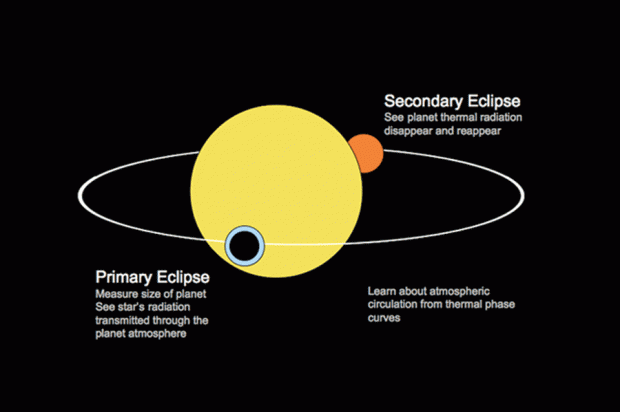
A transiting exoplanet is one with a special orbital alignment such that the planet goes in front of the star as seen from the telescope. When the planet goes in front of the star, some of the starlight passes through the atmosphere, and the planet spectral features are imprinted on the observed starlight (Figures i and ii). This transit transmission spectra technique has been honed over the last decade yielding dozens of observed exoplanet atmospheres.
Astronomers have identified atoms (sodium and potassium) and molecules (water vapor, carbon monoxide, and possiblyother gases) in exoplanet atmospheres and started to constrain the abundances of these gases (Figure ii). The most puzzling, pervasive finding is that, in most planet atmospheres, clouds are blocking a view of the dense atmospheric region where spectral lines are formed. Since many of the observed exoplanet atmospheres are too hot for water clouds, the condensed materials will be made of high-temperature condensates such as silicates or even iron. Today we are already able to study exoplanet atmospheres mostly limited to giant planets and to a narrow part of the visible and near infrared spectrum.
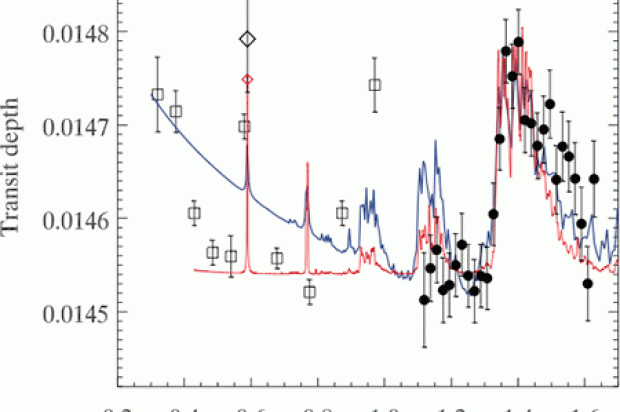
Now that the field of exoplanet atmospheres is established, we have even more ambitious plans than the founding of a sub-field of astronomy. That is to identify a habitable world by its atmosphere and to search for signs of life by way of biosignature gases: gases that are produced by life and accumulate in a planet atmosphere to levels that can be remotely detectable by next-generation telescopes.
First we will look for water vapor. Because detecting water oceans directly is not possible (oceans are dark in reflected light and mostly uniform), we will use water vapor as a proxy. On temperate rocky planet atmospheres, water vapor should be photodissociated by the host star’s UV radiation and the hydrogen escaping to space. Therefore, only rocky planets with liquid water oceans can sustain water vapor in the atmosphere. Water is required by all life as we know it and that’s why water is our first major milestone in the “search for life” triage. Next we will look for oxygen, a gas that fills Earth’s atmosphere to 20% by volume – but without plants or photosynthetic bacteria, our atmosphere would have virtually none. Astronomers are also considering a wide range of other biosignature gases, including methane, nitrous oxide, dimethyl sulfide, and a long list of other gases (Figure iii).
Next we will look for oxygen, a gas that fills Earth’s atmosphere to 20% by volume – but without plants or photosynthetic bacteria, our atmosphere would have virtually none. Astronomers are also considering a wide range of other biosignature gases, including methane, nitrous oxide, dimethyl sulfide, and a long list of other gases (Figure iii).
We won’t know if the suspect gases are produced by tiny microbes, enormous animals, or intelligent humanoids or if life producing the gas is carbon-based or something more exotic. To begin with, we have to focus on what life does – metabolizes and produces byproduct gases, not on what life is.
The search for life by way of exoplanet atmospheric biosignature gases is rich in detail and somewhat contentious on a burgeoning list of non-life false positives, that is, scenarios in which oxygen or other favored gases might be produced without help from life. Today, in fact, planetary scientists are concocting all the scenarios that might produce oxygen without life, and there is a long list that is growing. We would want to see gases like carbon dioxide or methane or others to establish the overall planet environment to help assess false positive signs of oxygen, but even with the best exoplanet atmosphere measurements that future telescopes and careful data analysis techniques have to offer, our findings might still be inconclusive.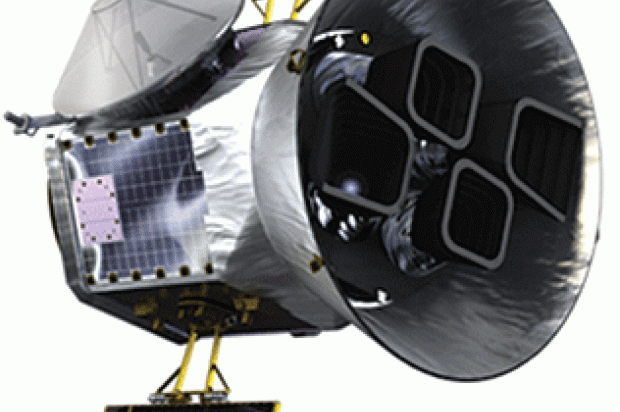 Compared with Earth, our Sun is so much larger (one hundred times), so much more massive (one million times), and so much brighter (ten billion times) that an exact Earth analog is still years away for biosignature gases study. We luckily have a fast track: small planets orbiting small M dwarf stars. In this case, the planet-to-star ratios are much more favorable (as good as 10-50 times smaller, a million times less massive, 10 million times less bright). So the exoplanet community has become ultra exuberant for M stars.
Compared with Earth, our Sun is so much larger (one hundred times), so much more massive (one million times), and so much brighter (ten billion times) that an exact Earth analog is still years away for biosignature gases study. We luckily have a fast track: small planets orbiting small M dwarf stars. In this case, the planet-to-star ratios are much more favorable (as good as 10-50 times smaller, a million times less massive, 10 million times less bright). So the exoplanet community has become ultra exuberant for M stars.
Let’s take a virtual trip to a rocky world orbiting a small star. Because small stars have a small energy output, a habitable planet around a small star must orbit very close to its star in order to have the proper temperature for liquid water. The alien sun would loom large in the sky, a few times larger than our Sun appears in our sky, because the planet would be so close to the star. Not only that, but the alien sun would be in the same place in the sky at all times. On the visit we could choose a destination where it’s always sunset, or where it is always daylight, or for stargazing, where the sky is always dark. The reason for the planet having a permanent day- and night-side is because of the planet’s proximity to the star. The huge gravitational force from the star over time would have forced the nearby planet into a “tidally-locked” state, where the planet shows the same face to the star at all time, just like the Moon does to Earth. Yourbirthday on this planet would happen frequently. A year on the planet (the time it takes the planet to orbit once around the star) would be a few to tens of Earth days. On second thought, visiting this planet might not be much fun. We wouldn’t be able to use a mobile phone or play video games, and we would need to wear powerful sunscreen all the time. This is because the harmful ultraviolet radiation and huge flares of energy from the nearby star would constantly be bathing the planet’s surface, disabling electronics and even destroying biological cells.
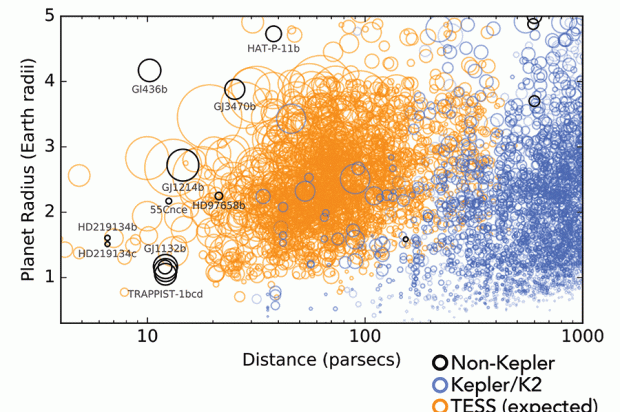
The fixation on M dwarf stars reminds me of the case of someone looking under a streetlight for her lost keys because she can’t see anywhere else on a dark night. Personally, I cannot decide if searching for life on this kind of planet is a good example of breaking free from an “Earth-centric” biased view, or if instead it is a temporary diversion from finding the real thing, a true Earth twin orbiting a Sun-like star. But one thing is certain: if we never look, we’ll never know.
MIT will be soon be the center for discovery with the MIT-led NASA Mission “Transiting Exoplanet Survey Satellite” (TESS; Figure iv), a two-year survey of the entire sky designed to discover small planets transiting small stars. TESS has four identical, highly optimized, wide-field cameras that together can monitor a 24 degree by 90 degree strip of the sky. By monitoring each strip for 26 days and nights, TESS will tile the northern hemisphere sky in the first year and the southern hemisphere sky in the second year. It is scheduled for launch in December 2017, aboard a SpaceX Falcon 9 rocket, and will go into a very eccentric, inclined orbit around the Earth. The TESS team will deliver 50 rocky planets to the astronomy community, a number of which will be in their star’s habitable zone (the right distance from the star so that heat from the star might create a suitable surface temperature for liquid water). I am the TESS Deputy Science Director and leading the MIT TESS Science office. The entire exoplanet community is looking forward to using the James Webb Space Telescope to study the atmospheres of transiting planets found by TESS and other ground-based surveys.
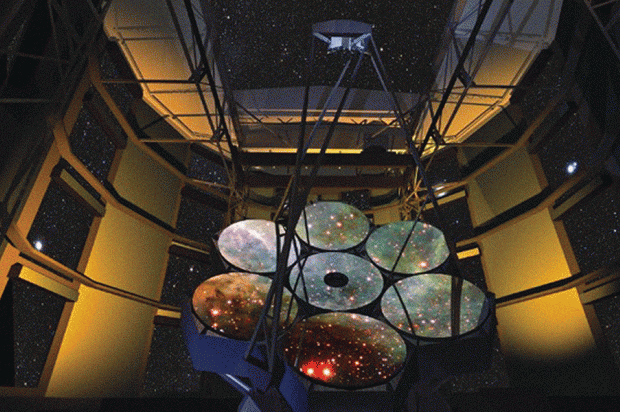
While we plan to uncover all of best nearby transiting planets, Nature may simply not have provided a habitable or inhabited world amongst them! Hence our wider investment in planet discovery and characterization methods. “Direct imaging” literally means taking an image of the planet, although the planet is so distant it is just a point of light. Direct imaging’s challenge is twofold. First, to spatially separate the planet and star in the sky and second to suppress the starlight to a level where the faint planet light can be detected on its own. One might think separating the planet and star on the detector is enough, but in fact the glare of the star is so overwhelming that starlight suppression is needed. One might think starlight suppression alone is enough, but the star and planet have to be on a different pixel on the detector. Although today direct imaging discovers and studies hot, giant planets orbiting far from the star, it is the same story as for transiting planets: the next generation telescopes are needed to reach down to habitable worlds.
Here at MIT we are excited about our anticipated participation in the Giant Magellan Telescope (GMT), a ground-based telescope with a 20-meter effective diameter mirror, now under construction in Chile. GMT’s aperture is so large it can spatially separate planets of interest from their host M dwarf stars and with the right instrumentation can suppress starlight during direct imaging. GMT should be able to reach dozens of bright M dwarf stars in the search for habitable worlds.
The story doesn’t end here – in some sense it is just beginning. M star-hosted planets are a complete unknown as life abodes. Indeed, a steady stream of theoretical challenges are thrown at M star worlds, albeit most are later overturned. The latest is that small M dwarf stars go through a long-lasting, high luminosity phase during an extended “teenage” phase before they become stable hydrogen burning “adult” stars. During this phase, any planet in today’s habitable zone would have been baked for up to tens of millions of years or longer, possibly losing not just surface oceans but all water in the planet interior. Worse, the long duration water loss could have generated a long-lasting massive oxygen atmosphere not produced by life.
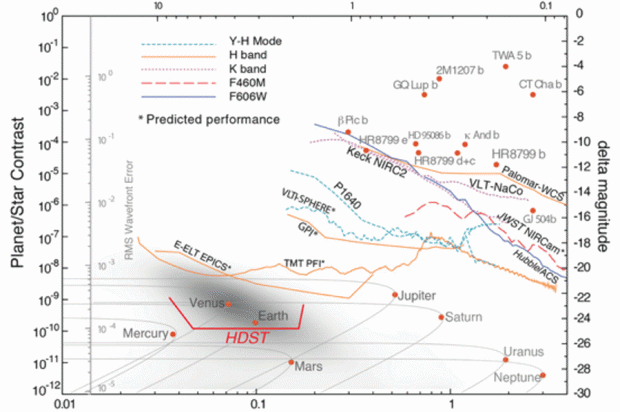
The search for a true Earth twin remains the holy grail of the field of exoplanets, but the sophisticated space-based missions to find the true Earth twin, for now belong to another story.
It is astonishing to live at a time when the discovery of exoplanets is nearly an “everyday task” for astronomers. Even before our next generation telescopes now under construction are ready, we already have a few planet candidates that might be the right temperature for life. For transiting planets, Trappist-1b and c, with the MIT connection through EAPS postdoc Julien de Wit, have a host star that is the smallest possible of M stars. For direct imaging the planet candidate is Proxima Centauri b, a planet orbiting in the habitable zone of our nearest star and expected to be accessible by the Giant Magellan Telescope. In exoplanets we struggle to find a new type of planet at the frontier of possibility, only to learn that the planet is just the tip of the iceberg. In other words, where there is one there is more, which is why I believe the habitable worlds are out there, just waiting to be found.
Read this story at MIT School of Science.